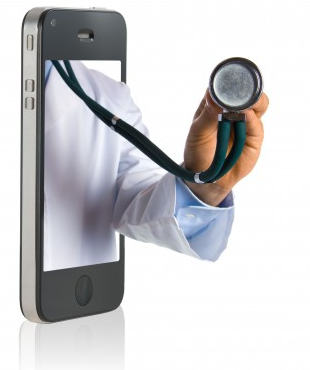New technology is already allowing doctors to see – and even feel – the body through a whole new experience.
The medical imaging industry is now undergoing an entirely new level of potential as virtual reality expands well beyond games and takes its first steps into hospitals as well as medical schools.
This VR technology based experience allows doctors to gain a whole new concept of a patient’s body.
The purpose is to allow doctors to use virtual reality in combination with other more traditional medical tech, such as magnetic resonance imaging (MRI) and ultrasounds, so they can see those images in a three dimensional view, but also interact with those images as though they were really there. By using these viewer devices, in addition to other hardware such as styluses, the doctor will be able to see the image, move it with his or her hand, and even feel resistance through the hardware, as though they were touching the actual organ or other body part that has been scanned.
This virtual reality experience would allow a doctor to look right inside a patient’s brain without cutting into it.
 The majority of today’s medical imaging equipment is already capable of producing high quality 3D images. However, surgeons must view those images in a 2D experience as the only place they can display it is on a traditional screen. Even with multiple images, viewed as a series of snapshots of a body part, they are required to create a mental image of the reconstructed body part in their heads.
The majority of today’s medical imaging equipment is already capable of producing high quality 3D images. However, surgeons must view those images in a 2D experience as the only place they can display it is on a traditional screen. Even with multiple images, viewed as a series of snapshots of a body part, they are required to create a mental image of the reconstructed body part in their heads.
The investment into 3D imaging has been put off, until now, because many doctors don’t feel that viewing a three dimensional image would provide enough benefit to be worth the expense. Hospitals would be required to demonstrate the ability of the tech to improve the care received by the patient, and then be reimbursed for that tech investment.
That said, with the latest virtual reality technologies, that situation could easily change. This tech can draw data and imagery from several sources in order to create a complete 3D view, with the potential to considerably improve the outcomes of patients.
This tiny wearable allows wearers to benefit from glucose monitoring and AR tech at the same time.
A team of researchers at the University of South Australia have now created the prototype for a piece of wearable technology in the form of a contact lens that sounds more like science fiction than actual reality.
At the same time that smart glasses haven’t seen the hoped-for adoption, this eyewear offers a unique experience.
The contact lenses have been created to be a wearable technology that is electrically conductive and that could potentially host tiny displays. The tech would make it possible for a wearer to receive health feedback, such as blood sugar levels, and would be able to take advantage of certain augmented reality displays that would be shown as an overlay on top of the actual visible environment around them.
This type of wearable technology has been the pursuit of a few different teams around the world.
 That said, the University of South Australia researchers from the Future Industries Institute (FFI) have been making some astounding advancements in the area of ultra-thin film tech sensors and displays. Previously, the same team of researchers have managed to come up with a type of thin reflective film coating that would improve the efficiency of vehicles. This same material could be used for the creation of smart windows on a building, so the amount of sunlight entering a room could be controlled.
That said, the University of South Australia researchers from the Future Industries Institute (FFI) have been making some astounding advancements in the area of ultra-thin film tech sensors and displays. Previously, the same team of researchers have managed to come up with a type of thin reflective film coating that would improve the efficiency of vehicles. This same material could be used for the creation of smart windows on a building, so the amount of sunlight entering a room could be controlled.
That said, the most recent focus of the team has changed directions to a more medical pursuit. According to Drew Evans, an FII associate professor from the research team, “We have always known that our film coating technologies had potential for many applications and now we have taken that a step further by proving that we can make biocompatible, conducting polymers at the nanoscale and grow them directly on a contact lens.”
The wearable technology prototype was designed by using a layer of hydrated hydrogel substrates on the lens, which made it possible for a PEDOT polymer to be added to the lens surface. That polymer was engineered to be highly conductive at the same time that it is bio-compatible. Moreover, the team treated the hydrogel with plasma ahead of the application in order to ensure improved adhesion.
 The majority of today’s medical imaging equipment is already capable of producing high quality 3D images. However, surgeons must view those images in a 2D experience as the only place they can display it is on a traditional screen. Even with multiple images, viewed as a series of snapshots of a body part, they are required to create a mental image of the reconstructed body part in their heads.
The majority of today’s medical imaging equipment is already capable of producing high quality 3D images. However, surgeons must view those images in a 2D experience as the only place they can display it is on a traditional screen. Even with multiple images, viewed as a series of snapshots of a body part, they are required to create a mental image of the reconstructed body part in their heads.
 That said, the University of South Australia researchers from the Future Industries Institute (FFI) have been making some astounding advancements in the area of ultra-thin film tech sensors and displays. Previously, the same team of researchers have managed to come up with a type of thin reflective film coating that would improve the efficiency of vehicles. This same material could be used for the creation of smart windows on a building, so the amount of sunlight entering a room could be controlled.
That said, the University of South Australia researchers from the Future Industries Institute (FFI) have been making some astounding advancements in the area of ultra-thin film tech sensors and displays. Previously, the same team of researchers have managed to come up with a type of thin reflective film coating that would improve the efficiency of vehicles. This same material could be used for the creation of smart windows on a building, so the amount of sunlight entering a room could be controlled.